A quarterly digest of facts, figures and opinion from the Talent Acquisition Sector
January 2024

Sorry, but that’s just me!
Please don’t bring your whole self to work
We’ve all met them. Those Jekyll and Hyde
colleagues who are always perfectly
pleasant out of work but a bit of a
nightmare in the office. At first encounter,
the contradiction can be jarring, but once
you get to know these characters the
explanation is usually the same: they’re
basically decent people who are unable
to control their less attractive qualities
when under stress.
I was thinking about this the other
day when watching an advert for a
well-known brand which encourages
its employees to ‘bring their whole
self to work’.
That’s a lovely idea if we’re just talking
about hobbies and hairstyles. But what
about politics? What about religion? What
about our flaws? If I have a bad temper
should I bring that to work or should I,
rather, try to suppress it in the interests of
a harmonious working place?
The point touches on diversity and the
oft-repeated belief that ‘diversity is our
strength’. Unfortunately, this isn’t some
magically self-fulfilling statement.
Diversity might be a strength, but only if it
comes second to some sort of shared
value or ideal. And in order for that to
happen, people must occasionally hold
back some of their natural selves.
In the last twenty years or so, it’s become
increasingly fashionable for companies to
publish mission statements and solemn
sounding ‘values’. But recent research
from WhiteCrow suggests employees do
not always buy into these or, in many
cases, even know what they are. This is
perhaps unsurprising when the same
companies are also telling employees to
‘be yourself’. In short, these companies are
living a contradiction which is bound to
inhibit cultural cohesion and ultimately
harm output and revenues.
We see something similar in the real
world. Whisper it, but the most diverse
countries are not the most successful.
Liberia, anyone? Conversely, countries
such as Japan or South Korea which have
very low diversity seem nevertheless to
thrive. But perhaps most interesting are
those countries like Singapore which,
though diverse, are rigorously organized
around a clearly understood set of rules
and obligations.
In order for diversity to yield positive
results at corporate level, it needs not to
be a company’s sole aspiration. Instead, it
needs to be subordinated to a purpose
that all employees understand and
believe in. And if that means occasionally
dialing down one’s self-expression, that’s
probably no bad thing.
The World According to WhiteCrow
As the world’s largest sourcing and recruitment company, WhiteCrow works with clients
across multiple geographies and sectors. So a brief glance at what we’re working on
ought to provide a clue to what’s going on in the wider market . .
- As any recruiter will know, the last quarter of any calendar year is an unpredictable time. Are talent leaders in a rush to spend their remaining annual budgets or are they already thinking of Christmas and putting off big hiring decisions until January?
- This time round, the answer seems to have been . . . both. Yes, our December workload was lighter than the previous two months, but only very slightly, and the quarter as a whole compared well with the previous one. In fact, October and November both exceeded any month in Q3 in terms of client recruitment activity.
- The sector where we saw most activity was oil & gas (where we identified a whopping 10,144 candidates) but we were also kept busy by clients in consumer goods, professional services, financial services and chemicals.
- Interestingly, work for recruitment & staffing firms also spiked considerably– another sign that companies are still keen to hire in spite of a stuttering global economy.
- The big question is whether that economy will lift in the coming months, especially with so many countries going to the polls. Among the major countries holding elections in 2024 are the US, the UK, India, Mexico, South Africa and Taiwan.
- Worth keeping an eye therefore on all the global economic indicators – not least, the activity of the world’s largest sourcing & recruitment firm. See you next quarter.
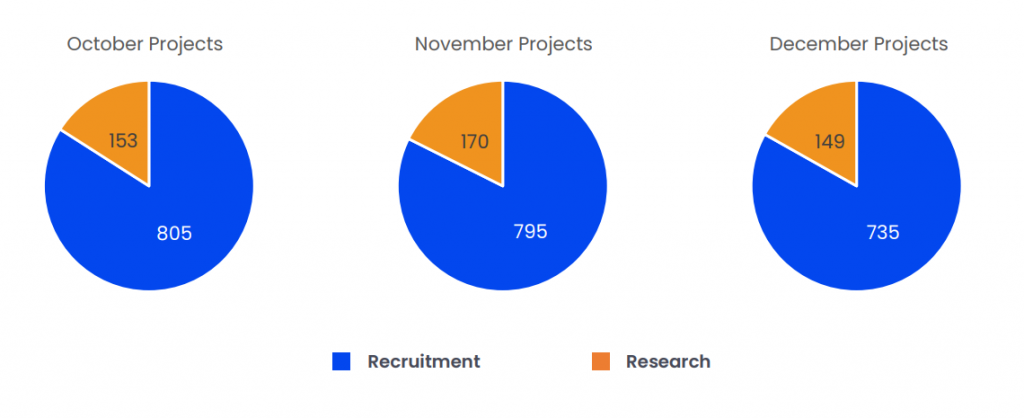
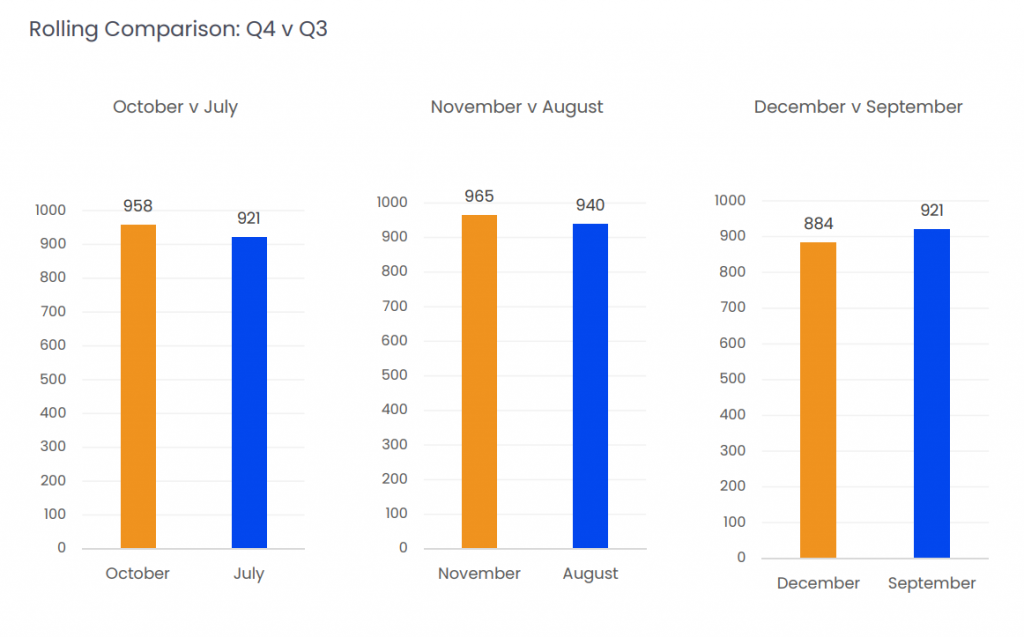
Talentomics
Covid. Cost of living. Ukraine. Whatever your view on the big issues of the day, we can all
agree these are unpredictable times. That’s a nightmare for workforce planning. So now
more than ever Talent teams need to be across the numbers. Below, we share a
selection of economic charts and comment briefly on their implications for recruitment.
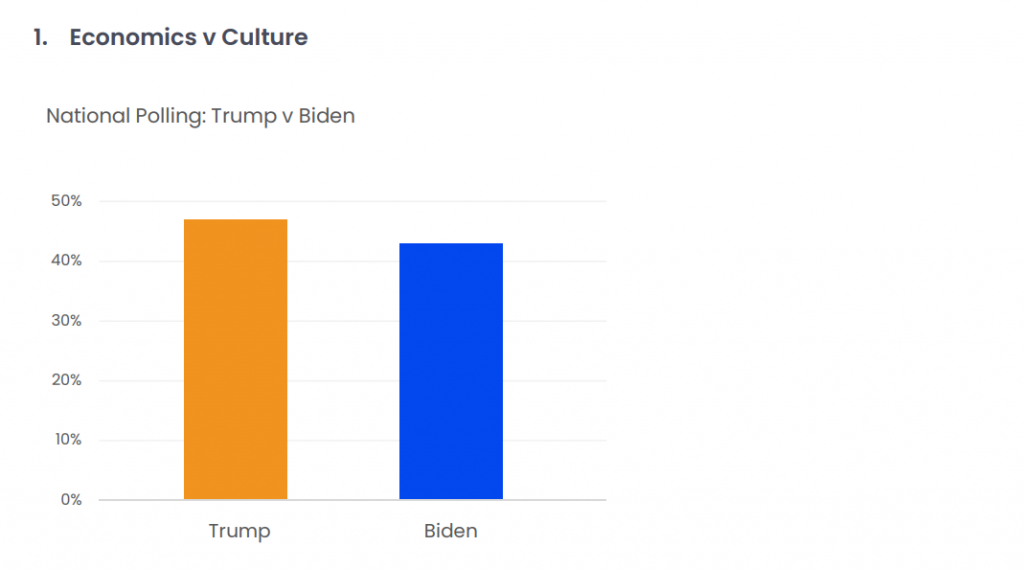
- A recent poll from the Wall Street Journal puts Donald Trump on course to beat Joe Biden in an increasingly likely runoff between the two in this year’s Presidential election.
- We take no view on this except to say that it’s unusual to see an incumbent President performing so badly in the polls when the economy is actually doing rather well: GDP for the third quarter was 4.9%, a growth rate most countries can only dream about. Data on jobs is also good with unemployment now down to 3.7%
- The problem is, whatever the data says, voters simply don’t feel better off. There’s a lesson for TA leaders here. For voters, think candidates. As we have repeatedly said, the best way to attract and retain top talent is to make people feel good. Yes, that means paying well and turning a tidy profit but it also means creating an environment where they feel their life is in a good place.
- Otherwise, you’ll end up doing a Biden: winning on economics but losing on culture.
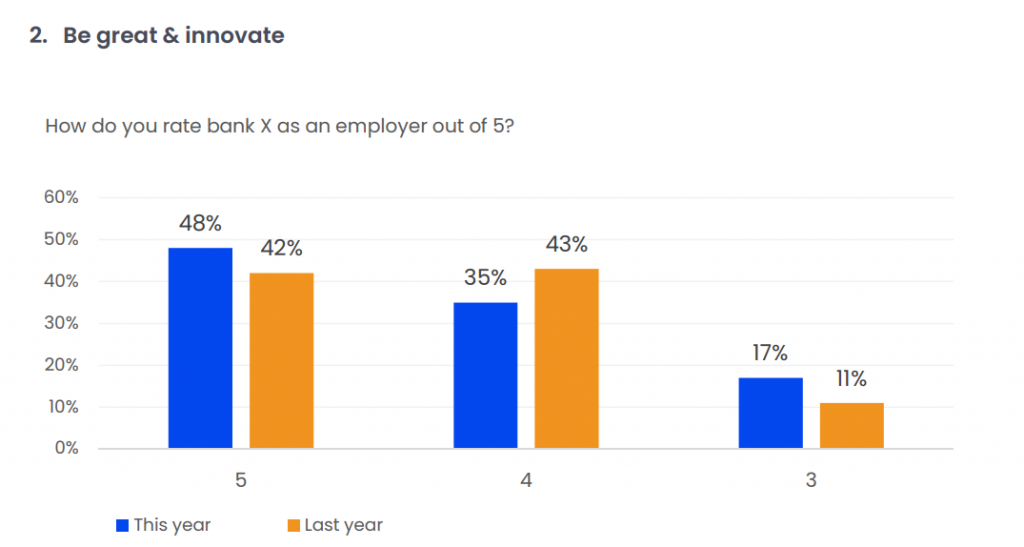
- So how do you create a good culture? And how do you recognize one when you’ve got it? A few clues may be contained in a survey we recently completed for a well-known global investment bank.
- The bank scored very highly, with 48% of respondents awarding it top marks. One can conclude therefore that employees and candidates think this is a pretty cool employer. That being the case, it might pay to look at how the same source pool actually describes the bank.
- Our results show that respondents variously characterized the bank as “innovative”, “energetic”, “high performance” and “a top brand”. Interestingly, very few people mentioned money and nobody said anything about sustainability, purpose, diversity or corporate values. It’s not that these qualities are unimportant, it’s just that they are too often used by HR to reach out to candidates who are clearly prioritizing other concerns.
- You want the best candidates? Easy.
Be an innovative, high energy business posting great results.
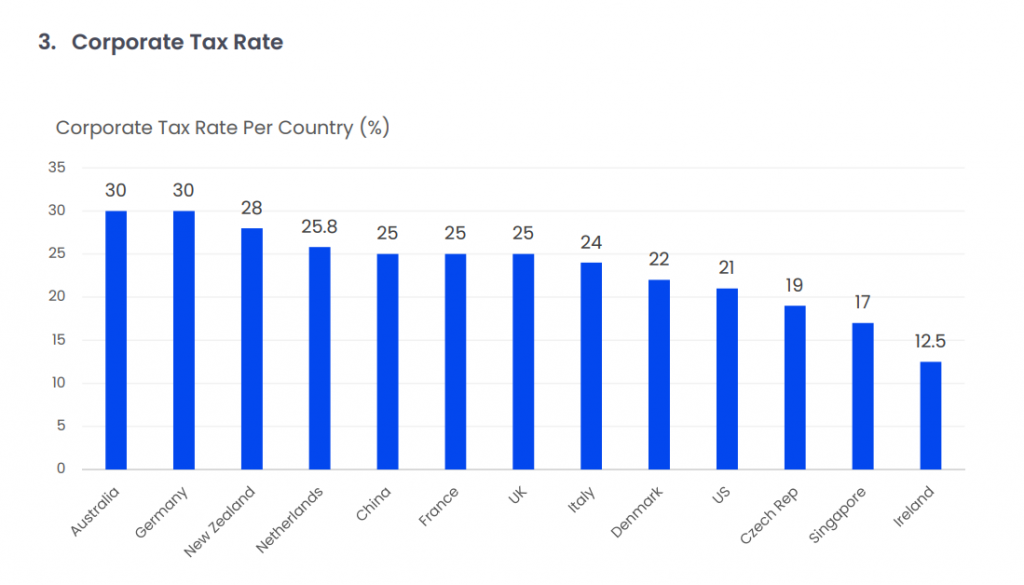
- As of January 1st this year, the world has a global minimum corporate tax rate. Didn’t know about that? That’s possibly because you didn’t get a vote on it, but the fact remains that 140 countries have agreed in principle to set rates at no less than 15% for companies with global revenues of more than €750 million.
- But if it’s only 15% (you might be thinking) it hardly matters anyway – still plenty of room for countries to compete on actual rates, as illustrated by the table above. But as we all know, once politicians hit upon a ‘good idea’, they don’t tend to leave it alone. Who’s to say the minimum rate won’t soon creep up to 20%? Or 25%?
- Importantly, that will have an effect on growth. It’s no coincidence that the UK had the third highest outflow of millionaires last year following the government’s decision to hike corporate tax from 19% to 25%.
- So if you’re interested in which markets are going to see most demand for talent in the coming year, it’s worth keeping an eye on corporate tax rates – any country with a rate below 25% might soon see any advantage it has previously enjoyed fast eroding . . .

This was the verdict of a Global COO
whom we interviewed as part of an
insight report for a well-known
consumer goods brand. The brief was to
investigate the CEO minus-1 setup at
eight different organizations and
thereby arrive at recommendations for
the perfect C-suite design. Naturally,
one of the things we looked at was how
senior leaders combine operational
oversight with people management –
hence the quote we share above. But if 17 is
too many, what number of direct reports is
just enough? Well, we’d be sharing client
information if we told you that, but it’s a
question worth considering – not just at
C-suite but at any level of a business. In
fact, if you’re really interested, you might
consider commissioning an insight report . .

Wordplay
Like any industry, recruitment has its lexicon of odd words and phrases. The best of
these serve to illuminate complex topics; the worst merely confuse and obfuscate.
As for the rest, well, let’s take a closer look . . .

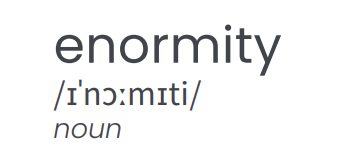
Sometimes you have to admit defeat.
The other day, I listened to a CEO talking
about “the enormity of our supply chain”.
At first, I thought this was some
anguished mea culpa after the business
had discovered child labour in one of its
factories. But then I realized he was
talking about operational scale. My
confusion centred around the word
‘enormity’. You see, this doesn’t actually
mean anything to do with size. The noun
from ‘enormous’ is ‘enormousness’. An
‘enormity’ on the other hand is a terrible
crime. But if CEOs are misusing the word,
perhaps it’s time to accept that language
evolves. What starts off as a mistake
becomes mere accepted usage.
We often see such evolution with phrases.
An example would be ‘off one’s own back’
which is strictly meaningless but also a
commonly recognized alternative to the
original cricketing analogy “off one’s own
bat”. Similarly, “chomping at the bit” is
simply the misheard version of the
equestrian term “champing at the bit”.
For the purist, it’s a shame when words or
phrases lose their meaning, especially
when it’s through widespread misuse
rather than any deliberate intent. But
without such slip-ups, corruptions and
malapropisms, we probably wouldn’t
have a language which is quite so rich,
varied and expressive.
Contact
To discuss any of the issues raised in this month’s newsletter or to explore how
WhiteCrow Research can help with any of your talent insight and recruitment
needs, please contact us.



